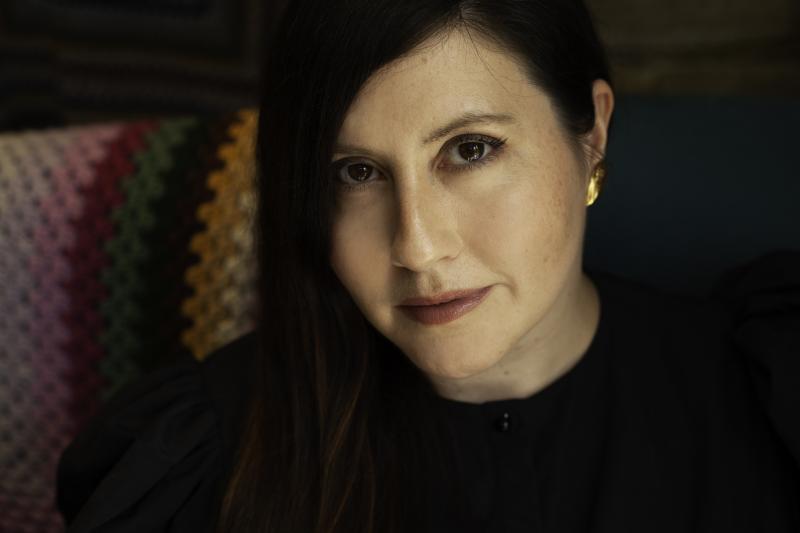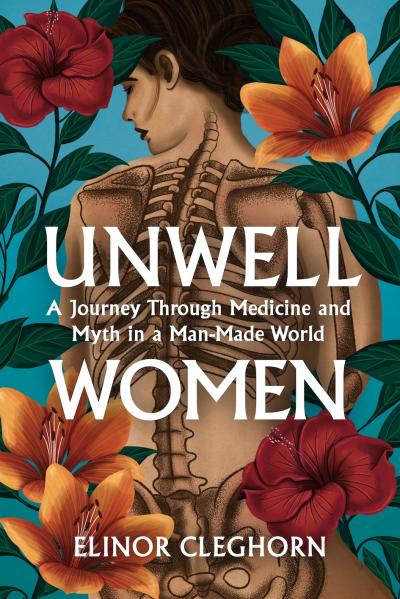Elinor Cleghorn: Unwell Women review – misunderstanding and misdiagnosis | reviews, news & interviews
Elinor Cleghorn: Unwell Women review – misunderstanding and misdiagnosis
Elinor Cleghorn: Unwell Women review – misunderstanding and misdiagnosis
Tracking the medical narratives that surround and often suppress women’s bodies

I’m one of the women in the pages of Elinor Cleghorn’s new history of the female body, Unwell Women: A Journey Through Medicine and Myth in a Man-Made World. I’ve dealt with strange chronic pain throughout my early twenties.
But speaking to other women who have experienced similar problems, I’ve realised that it is not as easy for everyone. Friends and other women often struggle to talk about what is wrong with their bodies. They know that their unwellness is non-normative and that there may not yet be the medical words to express their experience in a way that seems socially acceptable.
Cleghorn’s Unwell Women writes such difficult bodily experiences into unquestionable existence clearly and succinctly. She comes to the topic as an academic and cultural historian, and her book articulates the pain of the unexplained health conditions experienced by women with refreshing clarity, tracing the ways this pain is written into a patriarchal narrative. The path she takes through medical history is firm and convincing, charting the suppression of women’s bodies and experiences from Roman times to the present day.
 She moves through a diverse range of issues that have affected women’s bodies, from the balancing of the four humours, witchcraft, hysteria, and sterilisation during the Holocaust to present-day “mysterious” conditions that lack detailed medical research, like endometriosis and vaginismus. Particularly harrowing are accounts of the forced sterilisation of Jewish and Roma women by “gynaecologist” Carl Clauberg during the Holocaust. Cleghorn’s own account of her experience of lupus is revealing, too. Reading this book, even as a woman with similar experiences, I found a lot of the stories came as a shock.
She moves through a diverse range of issues that have affected women’s bodies, from the balancing of the four humours, witchcraft, hysteria, and sterilisation during the Holocaust to present-day “mysterious” conditions that lack detailed medical research, like endometriosis and vaginismus. Particularly harrowing are accounts of the forced sterilisation of Jewish and Roma women by “gynaecologist” Carl Clauberg during the Holocaust. Cleghorn’s own account of her experience of lupus is revealing, too. Reading this book, even as a woman with similar experiences, I found a lot of the stories came as a shock.
Cleghorn provides a clear explanation of the ways in which female experience has been marginalised and she also takes care to encompass the lives of a diverse range of women, not just focusing on a Westernised narrative of health. The book is validating to read because it gives a language to conditions which we often find nigh on impossible to describe, as well as clearly explaining a history of bodily oppression. But it is also intensely informative for those who (unsurprisingly, given the lack of education on the subject) may not actually know how to approach women’s health. References to feminist authors and activists like Charlotte Perkins Gilman are not obtuse but helpfully signpost the structure. Cleghorn’s book is in some ways comparable to Netflix’s Sex Education in terms of its educational focus, but with the cultural and medical context that the show lacks.
Cleghorn argues that speaking out about our bodies will help to redress the imbalance in medical culture. To do so “is profoundly feminist. It is generous and courageous to revisit and recall the trauma of pain”. She advocates, then, for countering silencing with a new language of the body, turning ourselves inside out and permitting our physicality to speak rather than letting the pre-existing medical narrative shape how we and others understand our health: “the truth about our illnesses and diseases is in our own bodies. Medicine has to let us translate the languages they are trying to speak.”
But in arguing that, “feminism has given us our bodies back”, Cleghorn assumes that women actually have full access to the language of their own form. This is where Unwell Women falters slightly. “The lives of unwell women depend on medicine learning to listen”, Cleghorn writes, yet this assumes that women have access to a language adequate to the expression of their experiences. It is trite to insist that women have completely reclaimed the word and their own bodies to the extent that we can simply speak our suffering and be heard. Articulation is still very difficult when a framework doesn’t always exist in which to conceptualise pain, and women, especially those who experience further identity-based discrimination in medicine, may not always be able to make their bodies and voices speak in the way they wish to when confronted by a doctor who appears unable or unwilling to understand.
Nevertheless, Cleghorn is undoubtedly right that “the cultural geography of women’s chronic ill-health is shifting”, and her own clear account contributes to this change in a significant way. She is not wrong when she writes that “we are the most reliable narrators of what is happening in our own bodies”. Still, is it possible to be wholly reliable in a language that is not yet fully one’s own? Women may struggle to narrate what is happening to their bodies without a systematic structure in place through which to receive and share this knowledge. Sometimes, simple speech is not as easy as it seems. But we must hope for the shift that Cleghorn sees to continue, one which her own book makes steady steps towards.
- Unwell Women: A Journey Through Medicine and Myth in a Man-Made World by Elinor Cleghorn (W&N, £16.99)
- More book reviews and features on theartsdesk
The future of Arts Journalism
You can stop theartsdesk.com closing!
We urgently need financing to survive. Our fundraising drive has thus far raised £49,000 but we need to reach £100,000 or we will be forced to close. Please contribute here: https://gofund.me/c3f6033d
And if you can forward this information to anyone who might assist, we’d be grateful.

Subscribe to theartsdesk.com
Thank you for continuing to read our work on theartsdesk.com. For unlimited access to every article in its entirety, including our archive of more than 15,000 pieces, we're asking for £5 per month or £40 per year. We feel it's a very good deal, and hope you do too.
To take a subscription now simply click here.
And if you're looking for that extra gift for a friend or family member, why not treat them to a theartsdesk.com gift subscription?
more Books
 'We are bowled over!' Thank you for your messages of love and support
Much-appreciated words of commendation from readers and the cultural community
'We are bowled over!' Thank you for your messages of love and support
Much-appreciated words of commendation from readers and the cultural community
 Thomas Pynchon - Shadow Ticket review - pulp diction
Thomas Pynchon's latest (and possibly last) book is fun - for a while
Thomas Pynchon - Shadow Ticket review - pulp diction
Thomas Pynchon's latest (and possibly last) book is fun - for a while
 Justin Lewis: Into the Groove review - fun and fact-filled trip through Eighties pop
Month by month journey through a decade gives insights into ordinary people’s lives
Justin Lewis: Into the Groove review - fun and fact-filled trip through Eighties pop
Month by month journey through a decade gives insights into ordinary people’s lives
 Joanna Pocock: Greyhound review - on the road again
A writer retraces her steps to furrow a deeper path through modern America
Joanna Pocock: Greyhound review - on the road again
A writer retraces her steps to furrow a deeper path through modern America
 Mark Hussey: Mrs Dalloway - Biography of a Novel review - echoes across crises
On the centenary of the work's publication an insightful book shows its prescience
Mark Hussey: Mrs Dalloway - Biography of a Novel review - echoes across crises
On the centenary of the work's publication an insightful book shows its prescience
 Frances Wilson: Electric Spark - The Enigma of Muriel Spark review - the matter of fact
Frances Wilson employs her full artistic power to keep pace with Spark’s fantastic and fugitive life
Frances Wilson: Electric Spark - The Enigma of Muriel Spark review - the matter of fact
Frances Wilson employs her full artistic power to keep pace with Spark’s fantastic and fugitive life
 Elizabeth Alker: Everything We Do is Music review - Prokofiev goes pop
A compelling journey into a surprising musical kinship
Elizabeth Alker: Everything We Do is Music review - Prokofiev goes pop
A compelling journey into a surprising musical kinship
 Natalia Ginzburg: The City and the House review - a dying art
Dick Davis renders this analogue love-letter in polyphonic English
Natalia Ginzburg: The City and the House review - a dying art
Dick Davis renders this analogue love-letter in polyphonic English
 Tom Raworth: Cancer review - truthfulness
A 'lost' book reconfirms Raworth’s legacy as one of the great lyric poets
Tom Raworth: Cancer review - truthfulness
A 'lost' book reconfirms Raworth’s legacy as one of the great lyric poets
 Ian Leslie: John and Paul - A Love Story in Songs review - help!
Ian Leslie loses himself in amateur psychology, and fatally misreads The Beatles
Ian Leslie: John and Paul - A Love Story in Songs review - help!
Ian Leslie loses himself in amateur psychology, and fatally misreads The Beatles
 Samuel Arbesman: The Magic of Code review - the spark ages
A wide-eyed take on our digital world can’t quite dispel the dangers
Samuel Arbesman: The Magic of Code review - the spark ages
A wide-eyed take on our digital world can’t quite dispel the dangers
 Zsuzsanna Gahse: Mountainish review - seeking refuge
Notes on danger and dialogue in the shadow of the Swiss Alps
Zsuzsanna Gahse: Mountainish review - seeking refuge
Notes on danger and dialogue in the shadow of the Swiss Alps

Add comment